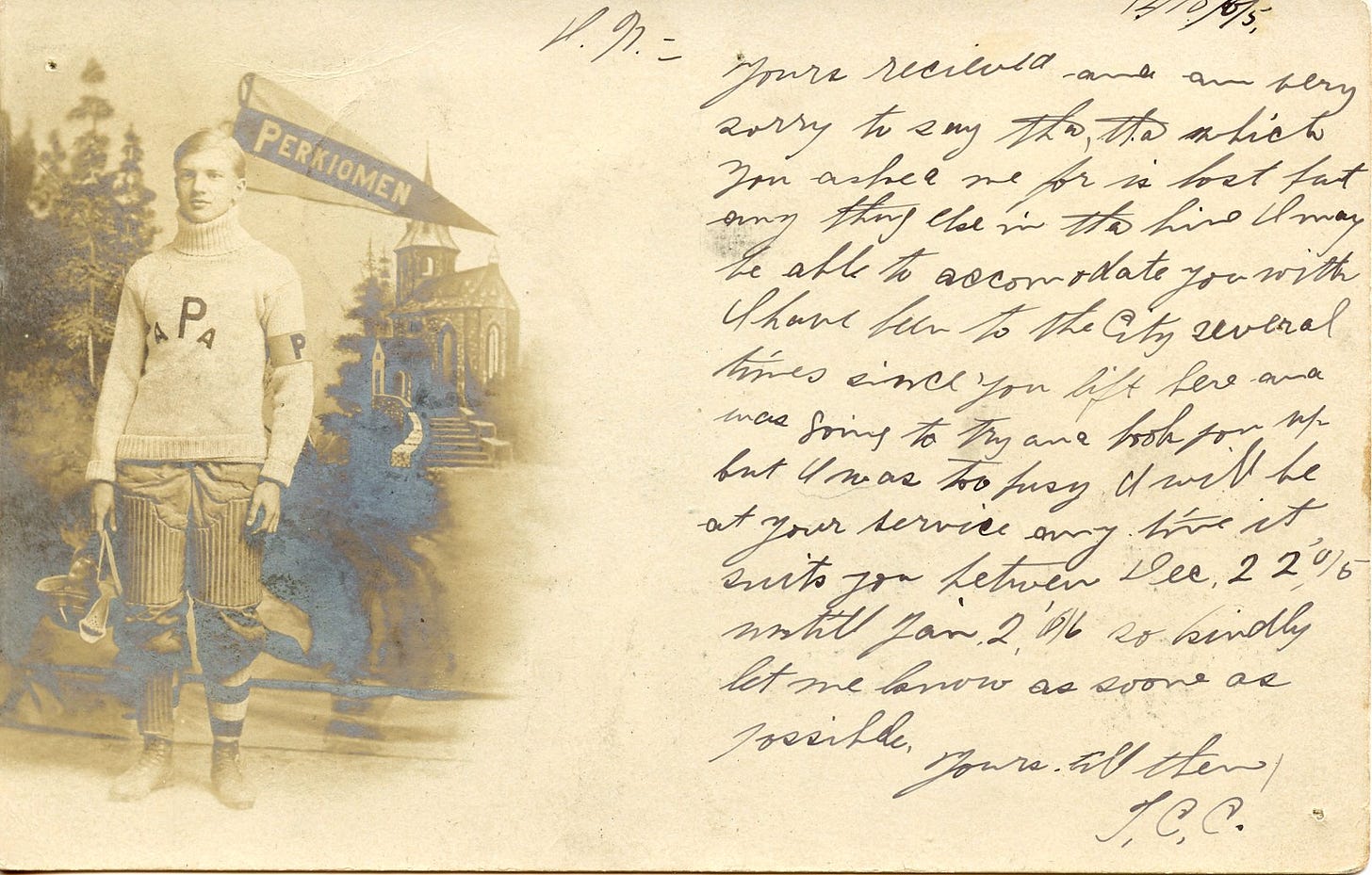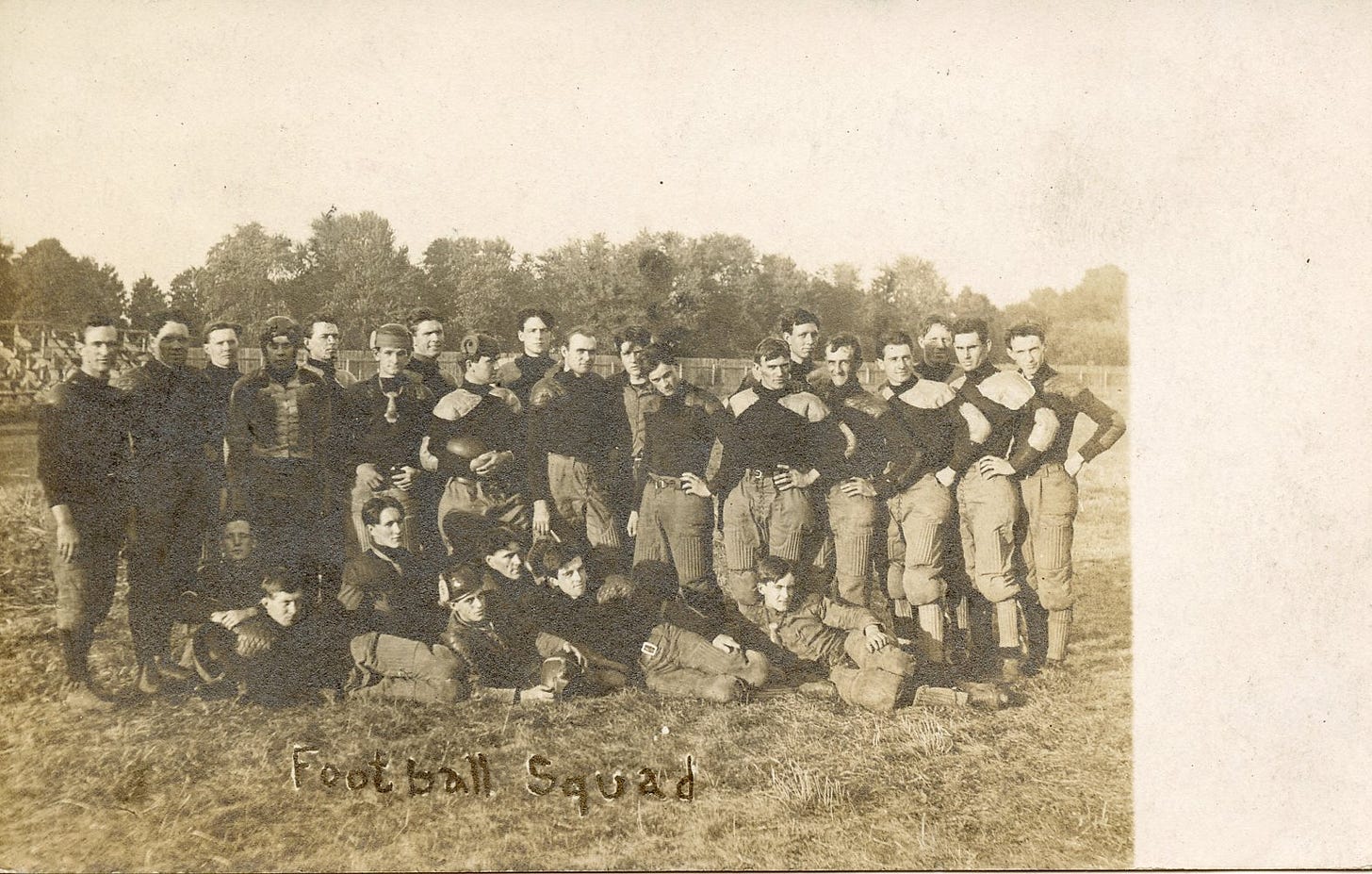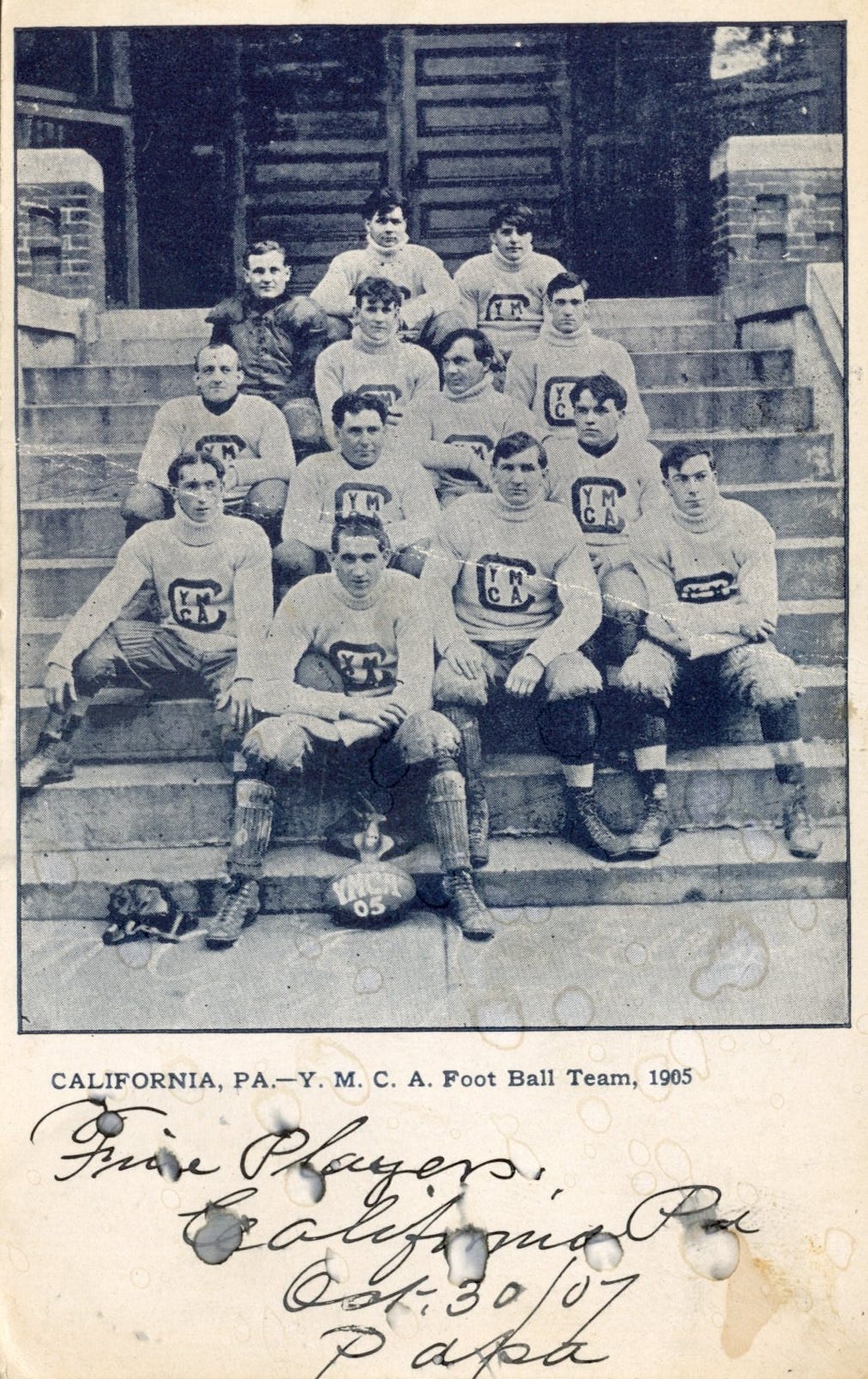Today's Tidbit... Managing the White Space
One of my favorite management concepts concerns managing the white space. The idea refers to corporate charts that place functions and people in boxes with white space in between. The challenge in most organizations is not managing the boxes; the bigger challenge is managing the interactions between boxes, whether that means getting peers, functions, or geographies to play well together. Differences in logic, assumptions, and expertise across the boxes cause communication and other problems.
A similar challenge occurs when writing for an audience. What should the writer assume the audience knows, and what needs to be explained? The audience that reads Football Archaeology includes coaches, media types, everyday fans, and memorabilia collectors, and each group brings a different knowledge set to what they read.
Since I often use old postcards to illustrate points about old-time football, you may have noticed that some old postcards have lots of white space, with an image stuck in a corner, like the one below. If you are a coach, media type, or everyday fan, you likely will not know why the image is stuck in the upper right corner. Only the memorabilia collectors will likely know that, but I’ll let everyone in on the secret before showing some examples.
The image above is great. It shows Colby College fans sometime early in the last century, with some sitting under a grandstand, as mentioned in Grandstanding in Early Football. So, why did old postcards have lots of white space? It was due to the scariest of bugaboos: government regulations.
When postcards first became legal, the United States Postal Service had a few rules that made little sense. America had "Private Mailing Cards" beginning in 1893, but Congress did not authorize "Post Cards" until 1901. Under the 1901 rules, the only writing allowed on the back side of the postcard was the addressee's information. If the sender wanted to write a message, they had to do so on the front of the postcard, so postcard producers often did not fill the front with images; they left white space on the front for messages. The amount and location of white space varied, but people scribbled messages wherever they found open territory.
The need for white space disappeared in 1907 when Congress allowed divided back postcards, which dedicated the right side of the postcard’s back to the addressee information and the left side to the message. Following the regulatory change, postcard producers could devote the front to the image, so the white space disappeared over the next few years.
Having armed you with a valuable postcard Tidbit to slip into a conversation with your history-dork cousin, neighbor, or coworker, I share football-themed white spacers below.
Surviving postcards without messages often found homes in scrapbooks or postcard albums.
White-space RPPCs also came in portrait style.
Football Archaeology is reader-supported. Click here to buy one of my books or otherwise support the site.














Very interesting. I learned something new once again. Makes a lot of sense